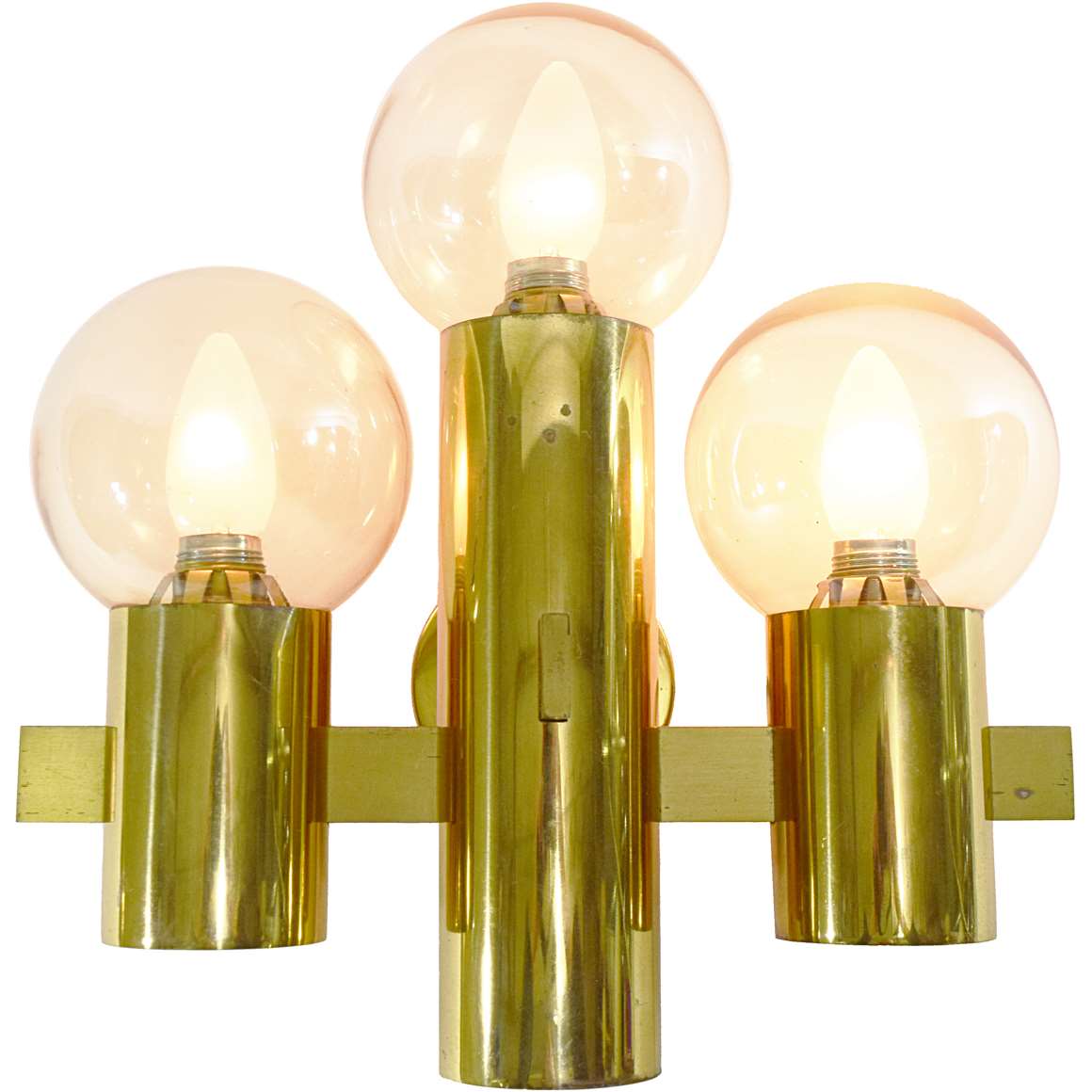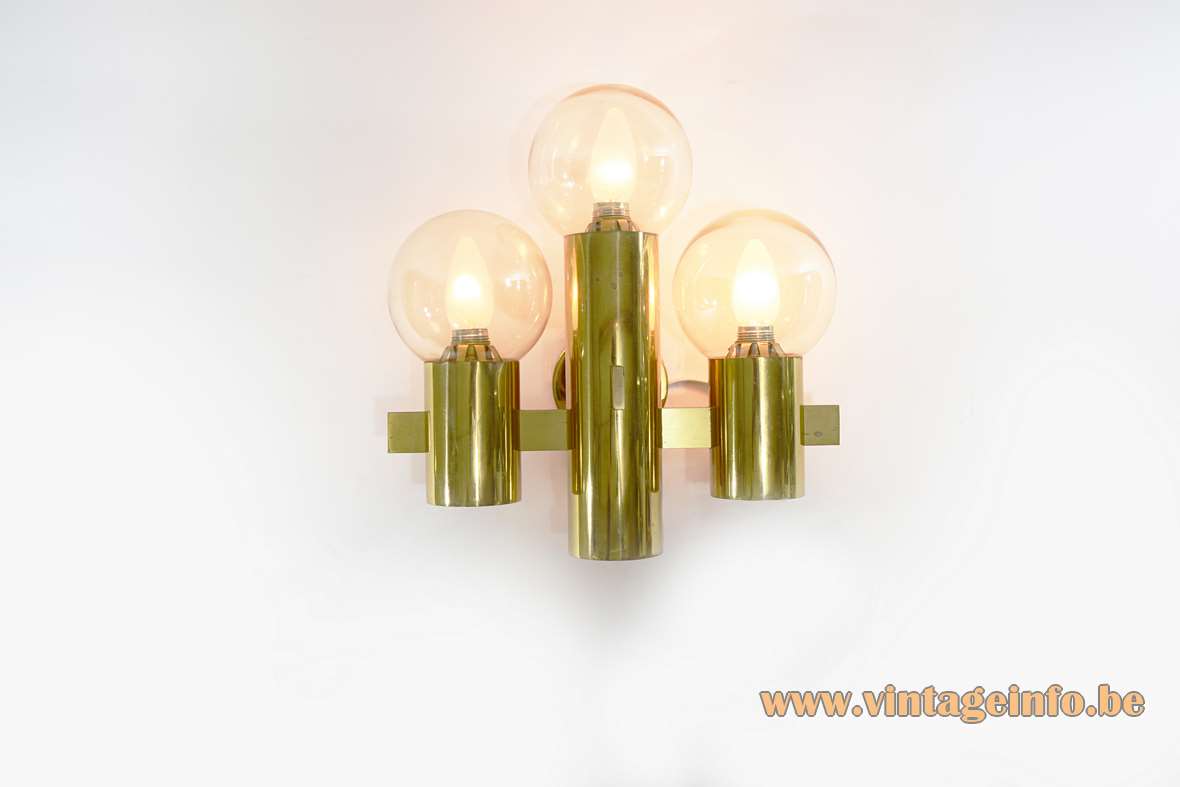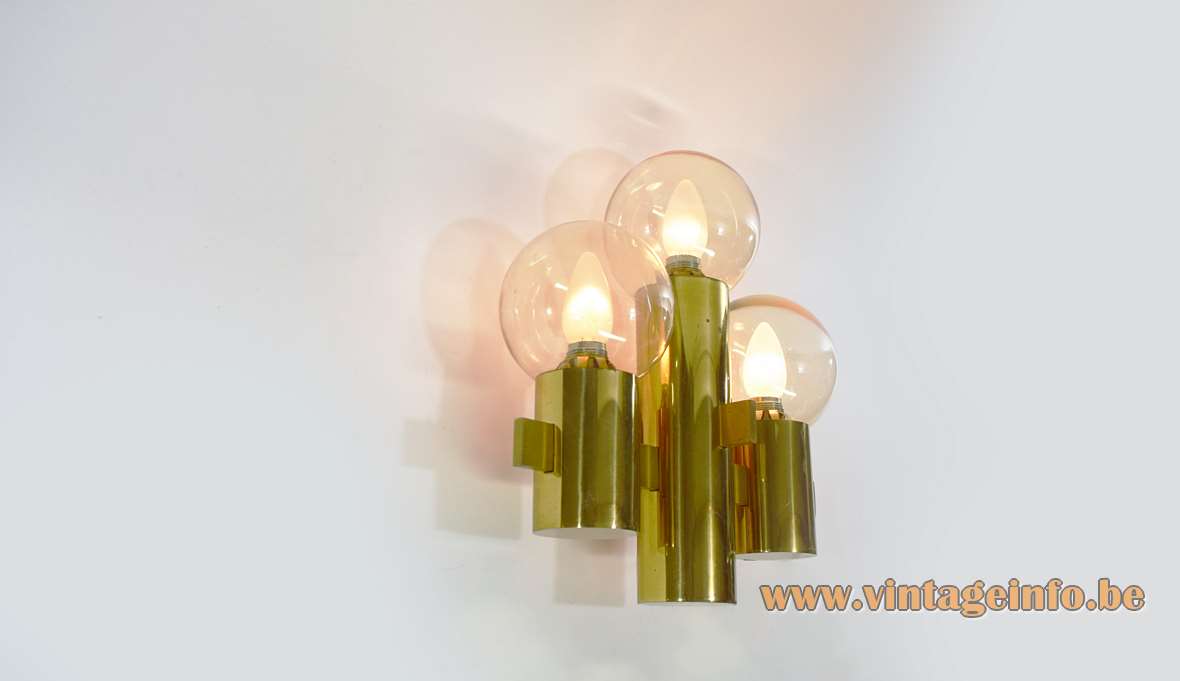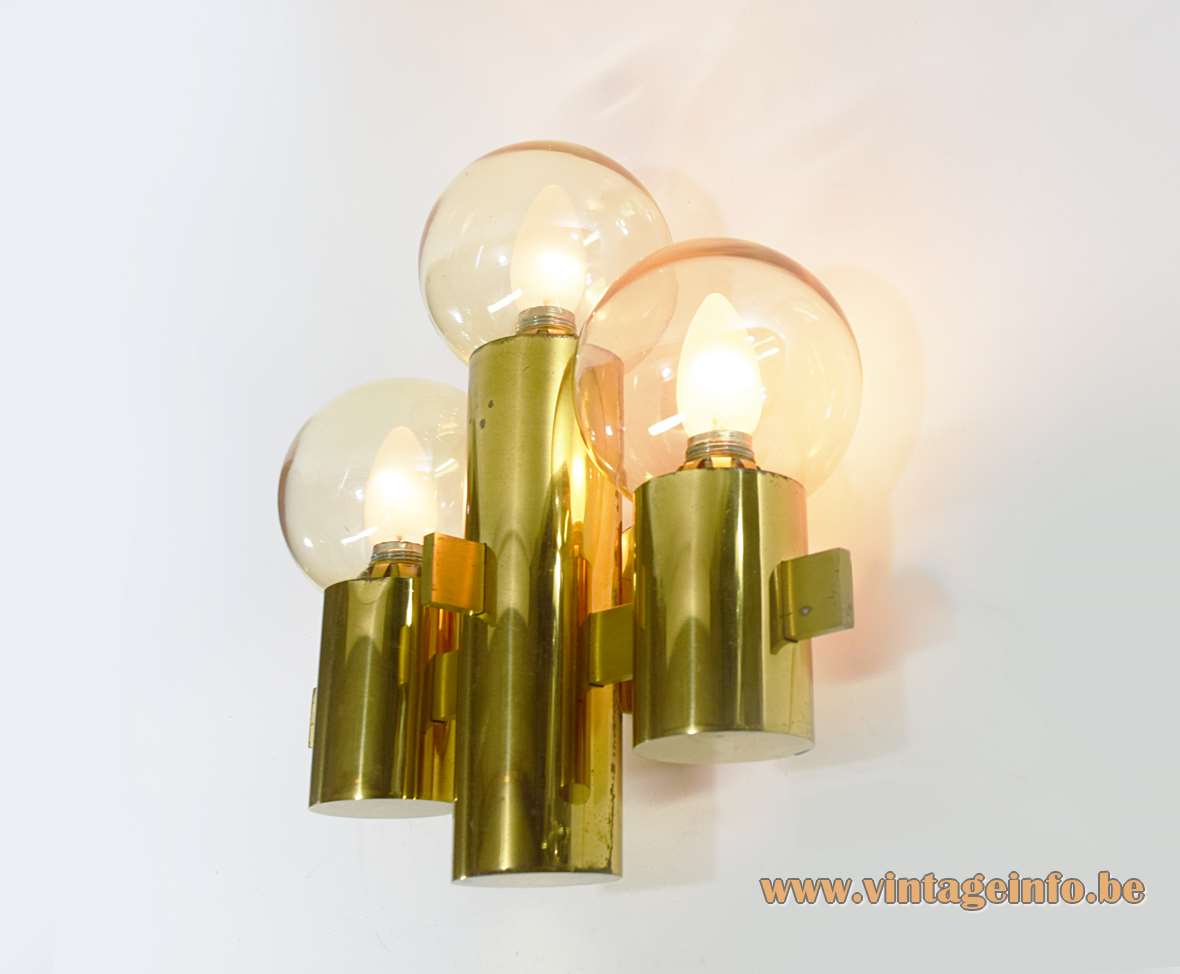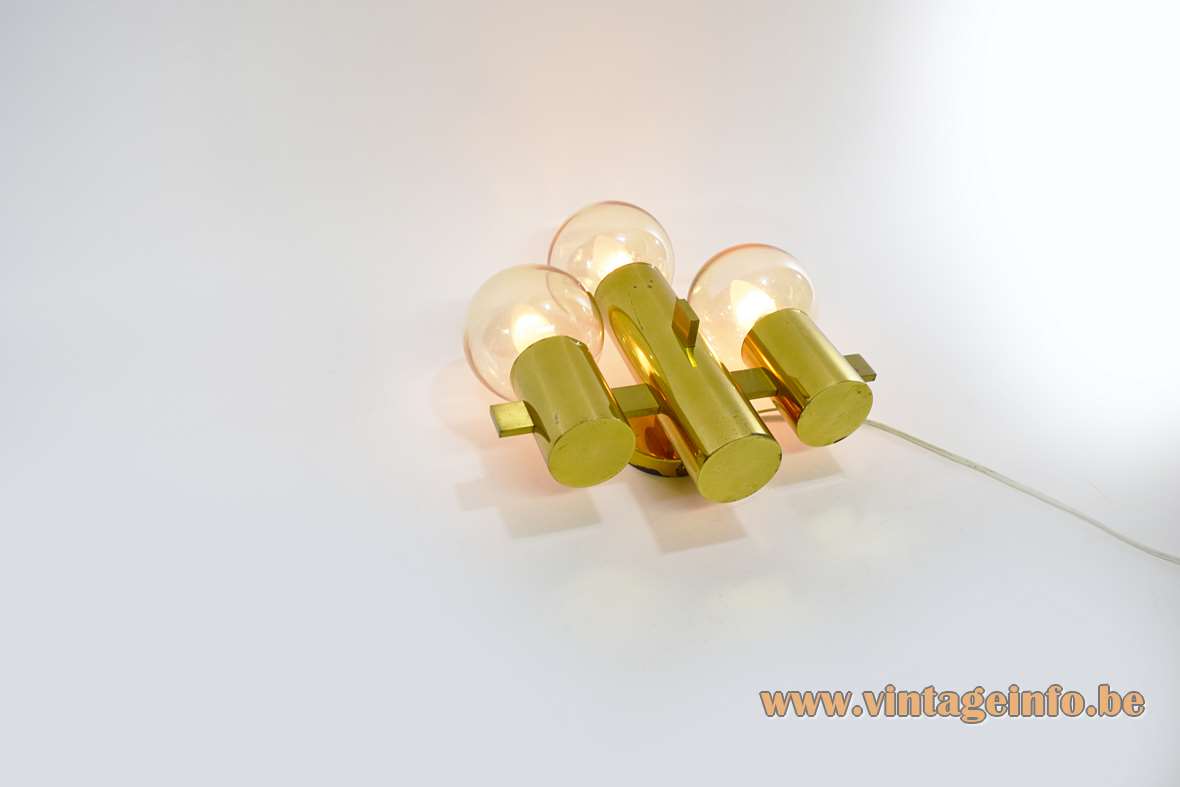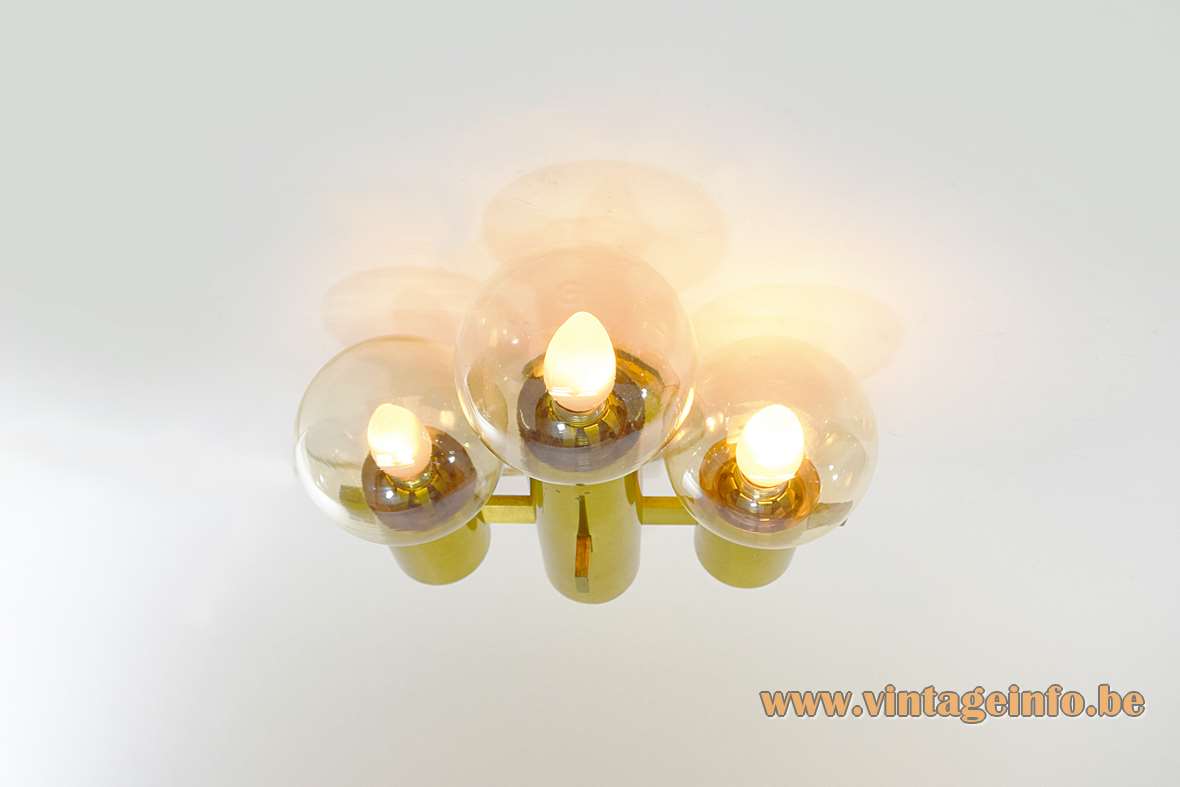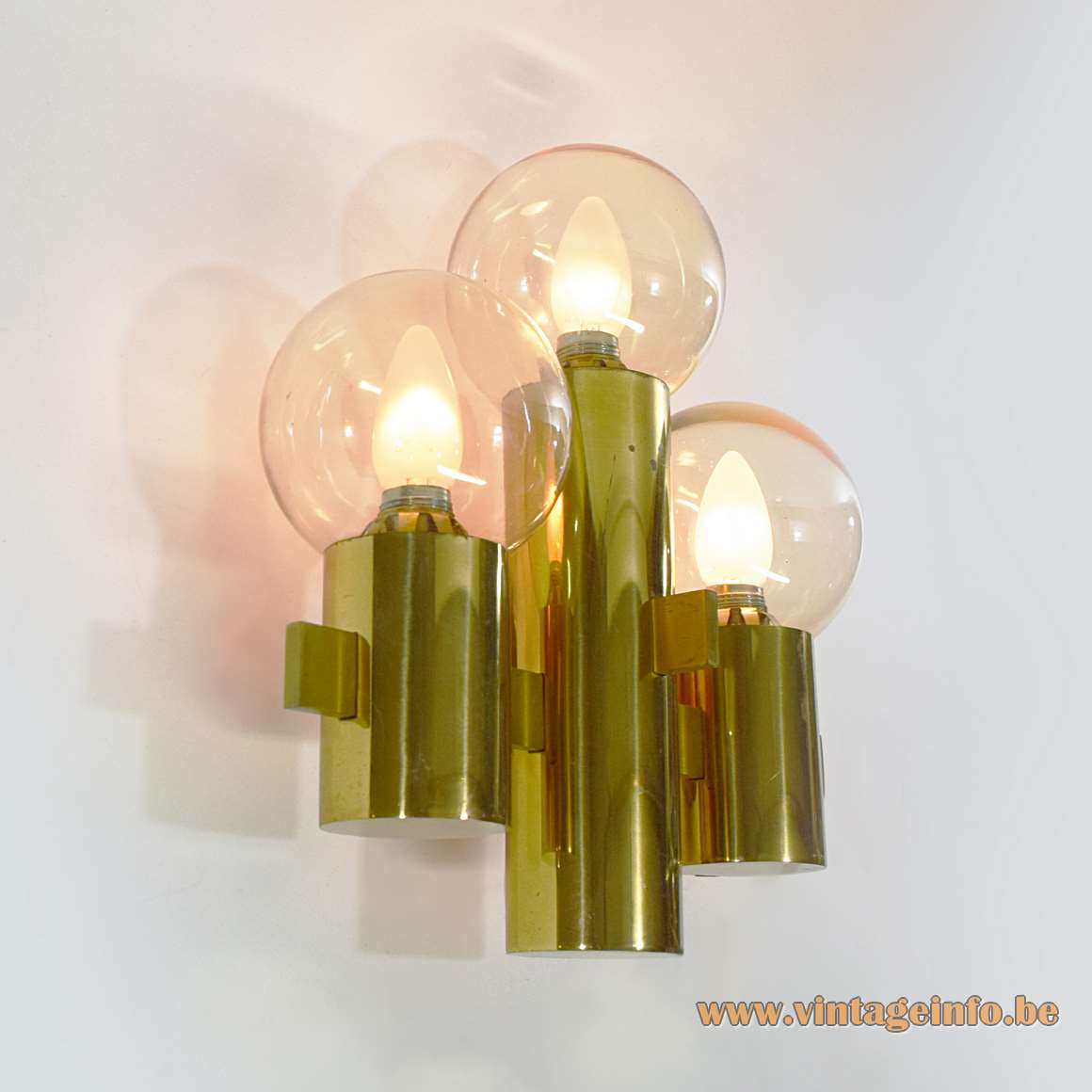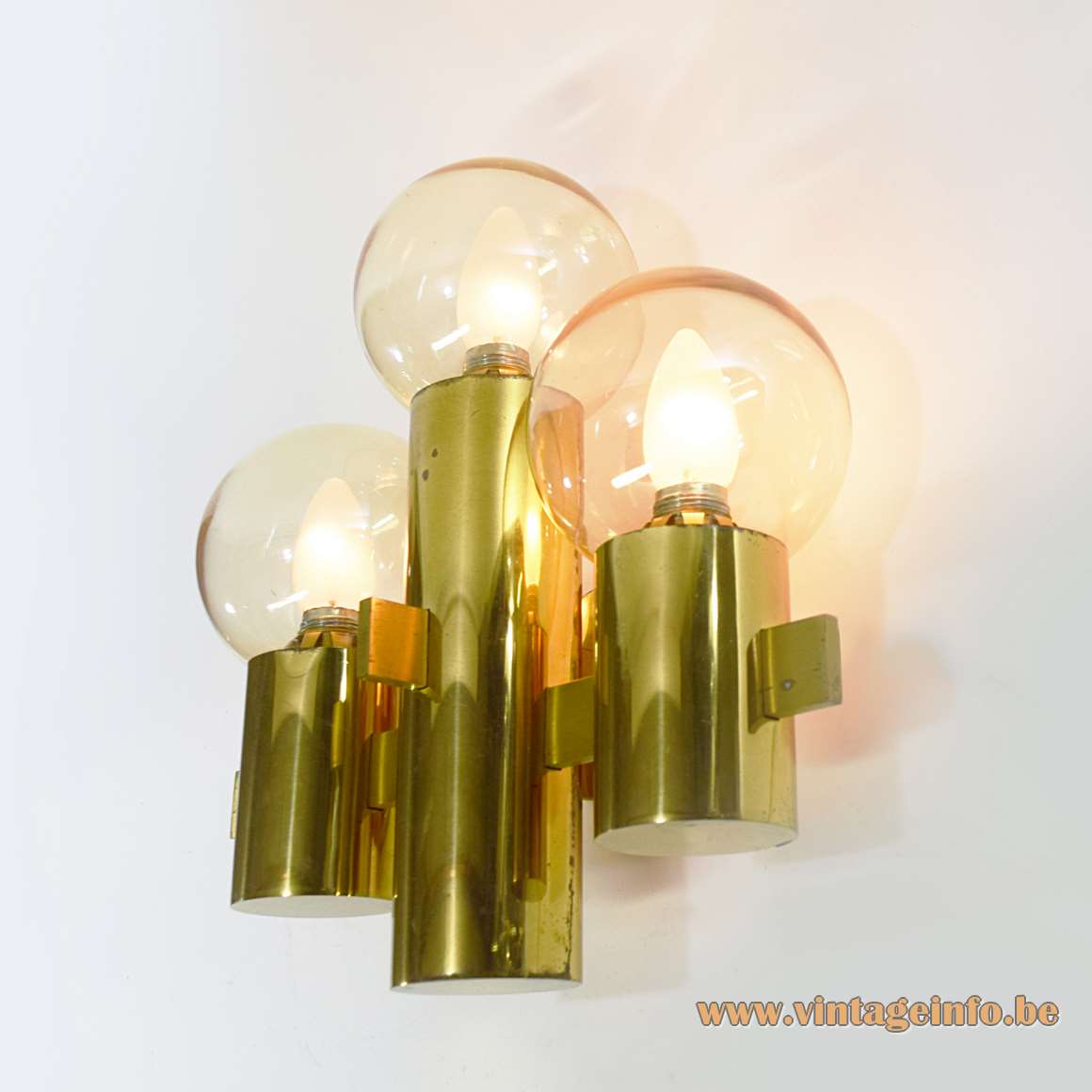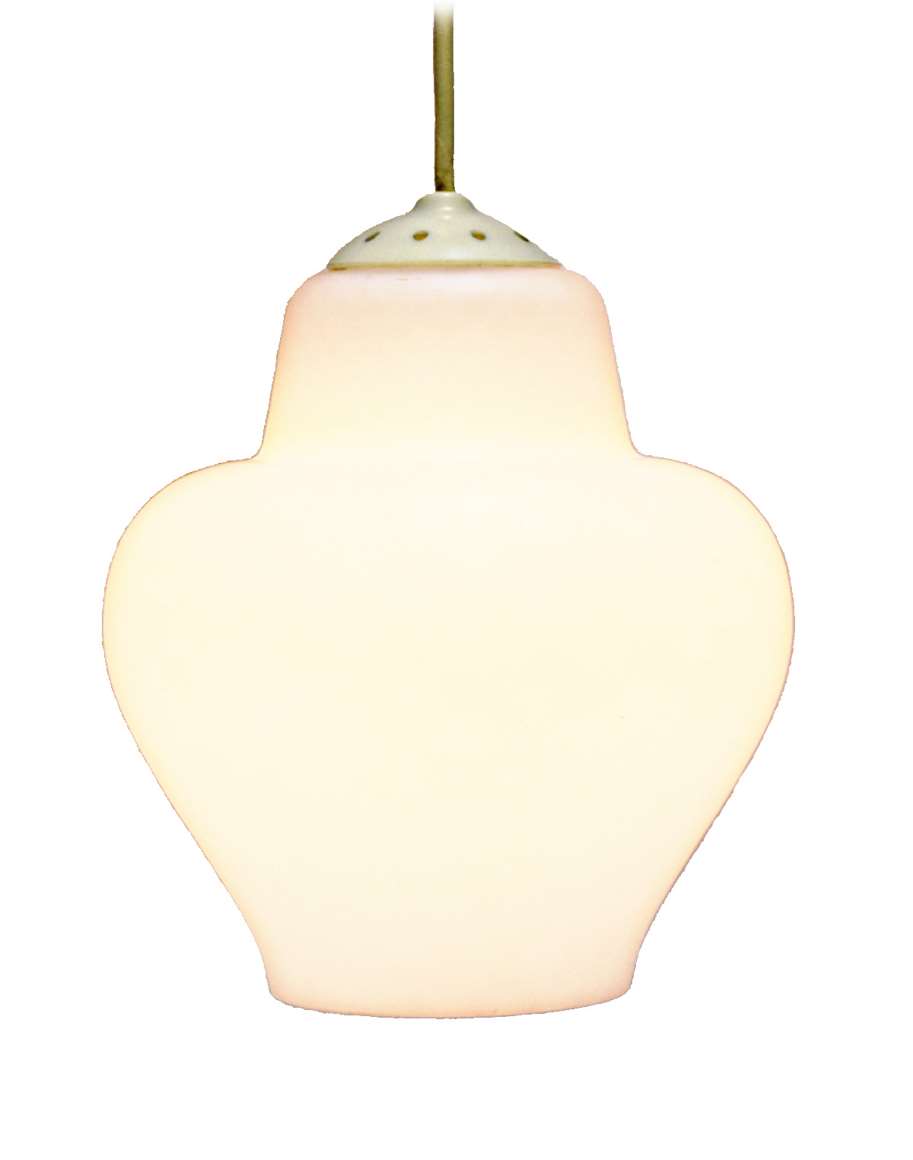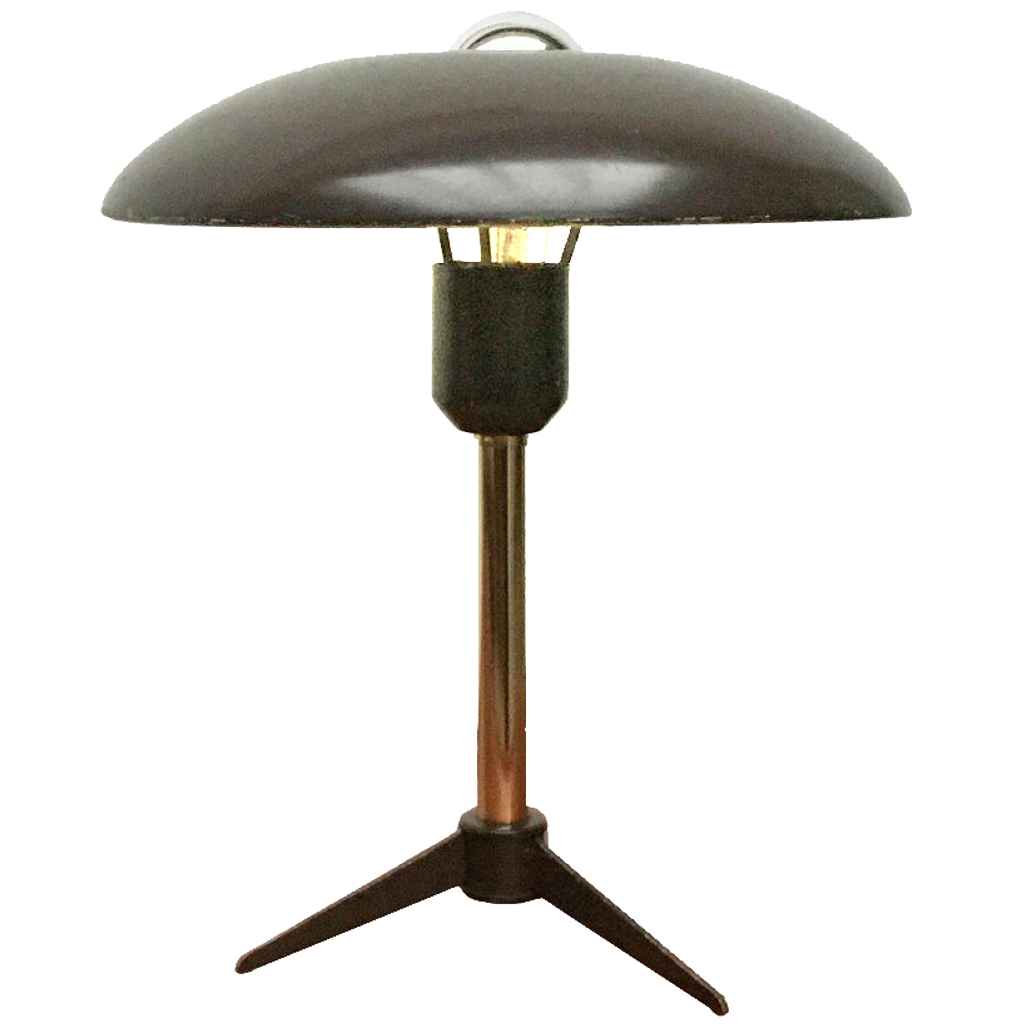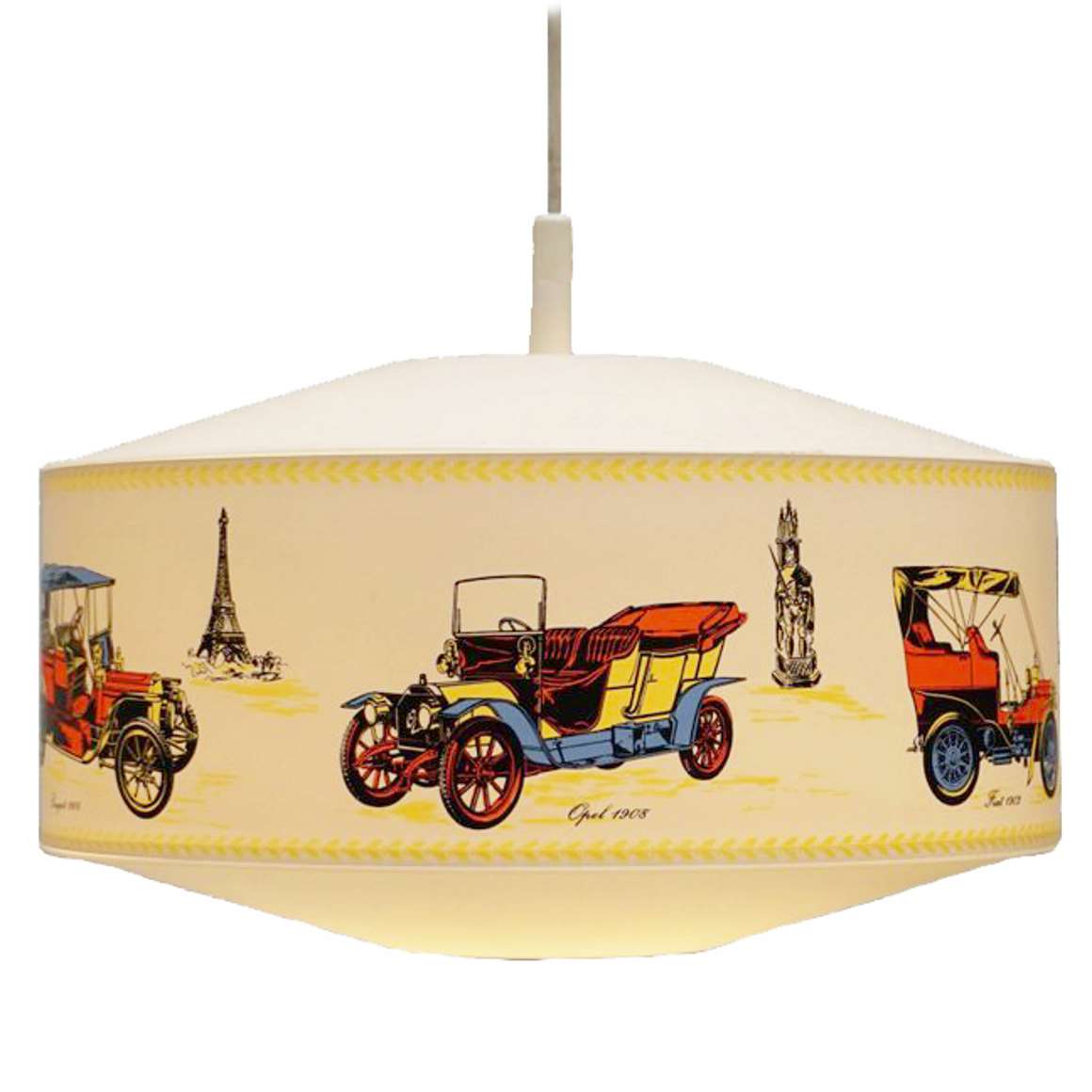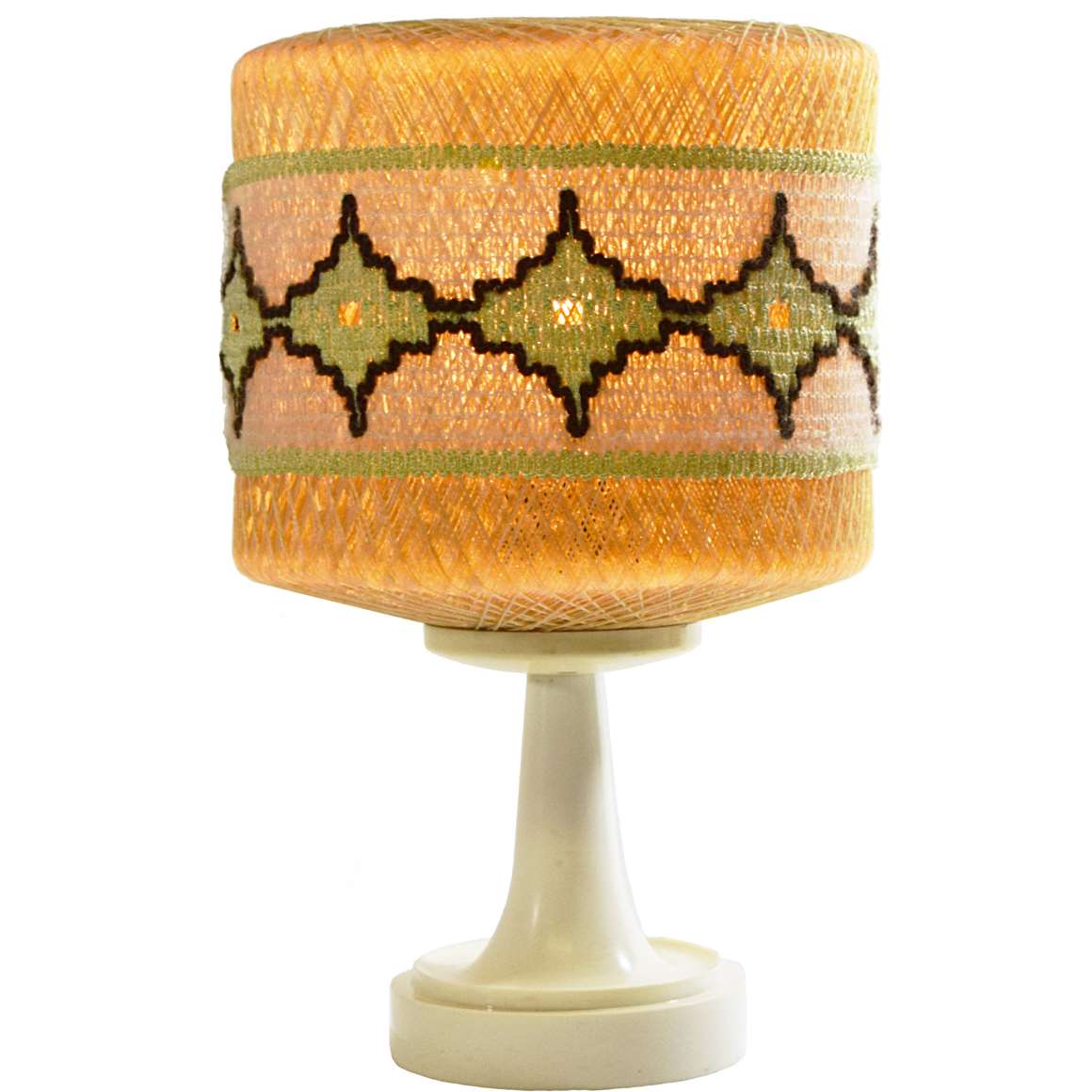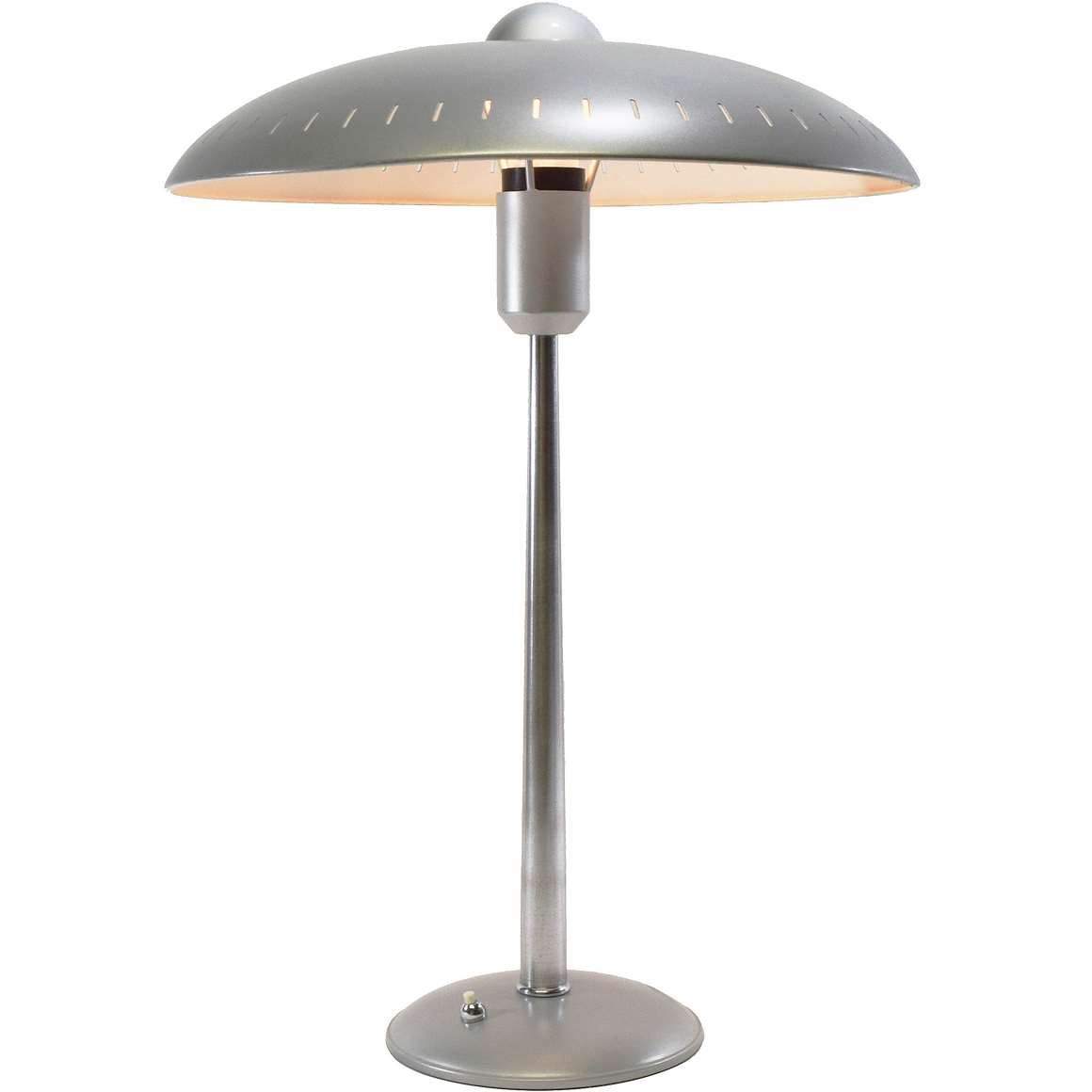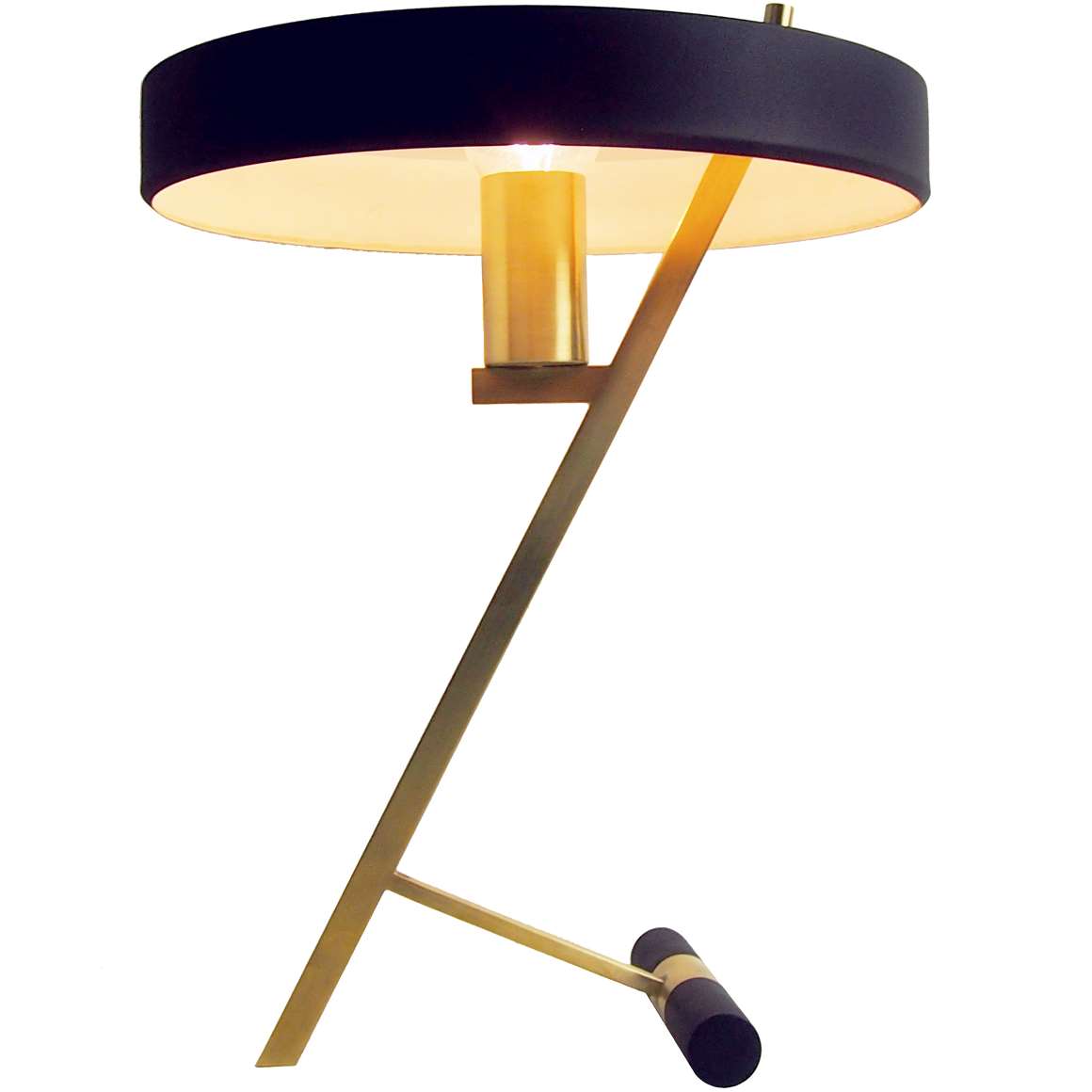Hans-Agne Jakobsson Wall Lamp
1983 – 1984 Philips Catalogue Picture
Hans-Agne Jakobsson wall lamp
Links (external links open in a new window)
Hans-Agne Jakobsson – Wikipedia (in Swedish)
The town of Markaryd – Wikipedia
Urban areas in Sweden – Wikipedia
Vintageinfo
White Lamingo BN 25 table lamp
Brass & smoked globes chandelier
Hans-Agne Jakobsson Wall Lamp
Materials: 3 metal (brass) tubes connected with a big brass slat. 3 crystal glass globe lampshades with a gold shine. Galvanised metal (iron) lampshade clamps. Metal E14 sockets.
Height: 34 cm / 13.38”
Depth: 14,5 cm / 5.70”
Width: 33 cm / 12.99”
Electricity: 3 bulbsE14, 3 x 60 watt maximum, 110/220 volt.
Anytypeof light bulb canbeused, not a specific one preferred.
Period: 1970s, 1980s – Mid-Century Modern.
Designer: Hans-Agne Jakobsson (1919 – 2009).
Manufacturer:Hans-Agne Jakobsson AB,Markaryd, Sweden.
Other versions: The design of this Hans-Agne Jakobsson wall lamp was also used for a chandelier, up to 15 globes. Made as a floor lamp, flush mount and table lamp. Lamps with different glass such as white and crackle glass were also produced. This lamp is model 1892/3.
Hans-Agne Jakobsson
Hans-Agne Jakobsson was a Swedish interior and furniture designer, born in Hvadhem on Gotland, Sweden in 1919. Jakobsson became a cabinetmaker at the age of 18 and later he graduated as an architect in Göteborg. He began as an assistant to Carl Malmsten and Werner West.
After his graduation Hans–Agne Jakobsson started as an industrial designer at General Motors.
In 1951 he founded his own lighting company Hans-Agne Jakobsson AB in Markaryd. He also designed lamps for his 2 other companies: AB Ellysett, also in Markaryd; lamps completely made of pine wood. SCAN-LIGHT was the third company. SCAN-LIGHT was for the lamps that were mostly made of plastic. They were all located in the same town.
Hans-Agne Jakobsson also had companies abroad: In The Netherlands it was Svera – Hans-Agne Jakobsson Nederland N.V. It was located at The Hague. Other seats from the company were located in Paris, France, Darmstadt, Germany. Barcelona, Spain, Stäfa, Switzerland, Oslo, Norway and of course Stockholm, Sweden. There was also a showroom in Toronto, Canada.
Also Koninklijke Philips N.V. from The Netherlands had some lamps by Jakobsson in their catalogue, also this Hans-Agne Jakobsson wall lamp, as you can see. It was also sold by the German company Teka (Theodor Krägeloh & Co).
Hans-Agne Jakobsson died in 2009at the age of 90. His closest family are his wife Lisa and their children, Karin and Ola.
Markaryd is an urban area in Sweden with some 4000 inhabitants (2016).
Koninklijke Philips N.V.
Inspired by the fast-growing electricity industry and by the promising results of Gerard Philips’ own experiments with reliable carbon filaments, his father, the Jewish banker Frederik Philips from Zaltbommel, financed the purchase of a small factory in Eindhoven, the Netherlands, on 15 May 1891.
The first years were difficult and the company was close to bankruptcy, but in 1895 Gerard’s younger brother Anton Philips joined the firm. With Anton’s commercial drive the family business expanded very quickly and the Philips brothers turned the lamp factory into the basis of what would become a major international electronics company.
To secure the supply of lamp parts, Philips very early started to make things in-house: its own machines, its own glass (from 1916) and even its own gas separation to fill lamps with argon, so it was less dependent on German suppliers during wartime. This strong vertical integration became typical for Philips and later also supported radio and medical products.
From the 1920s onward Philips did not only make lamps but also radios and even ran its own shortwave stations (PCJ and PHOHI) to promote them worldwide – an early mix of product and broadcasting.
In later sources the “first Philips shaver” is sometimes put in the early 1930s, but Philips itself dates the electric Philishave to 1939; in any case it shows how the company moved from lighting into small household and personal devices.
On 9 May 1940, the day before the German invasion, the Philips family left for the United States with a large part of the company’s capital. From there they continued operations as the North American Philips Company and kept control over the group during the war. After 1945 the headquarters returned to the Netherlands, again in Eindhoven.
After the war Philips became a broad technology group: radios, televisions, X-ray and medical equipment, and of course lighting, which remained one of its core businesses for decades. Only much later, in 2016, the lighting activities were split off and continued under the name Signify – all vintage Philips luminaires on this site belong to the period when lighting was still an integral part of Philips.
Today Philips is mainly a health-technology company. The roots are still in Eindhoven, but since 2025 the head office is in Amsterdam (Prinses Irenestraat 59).
